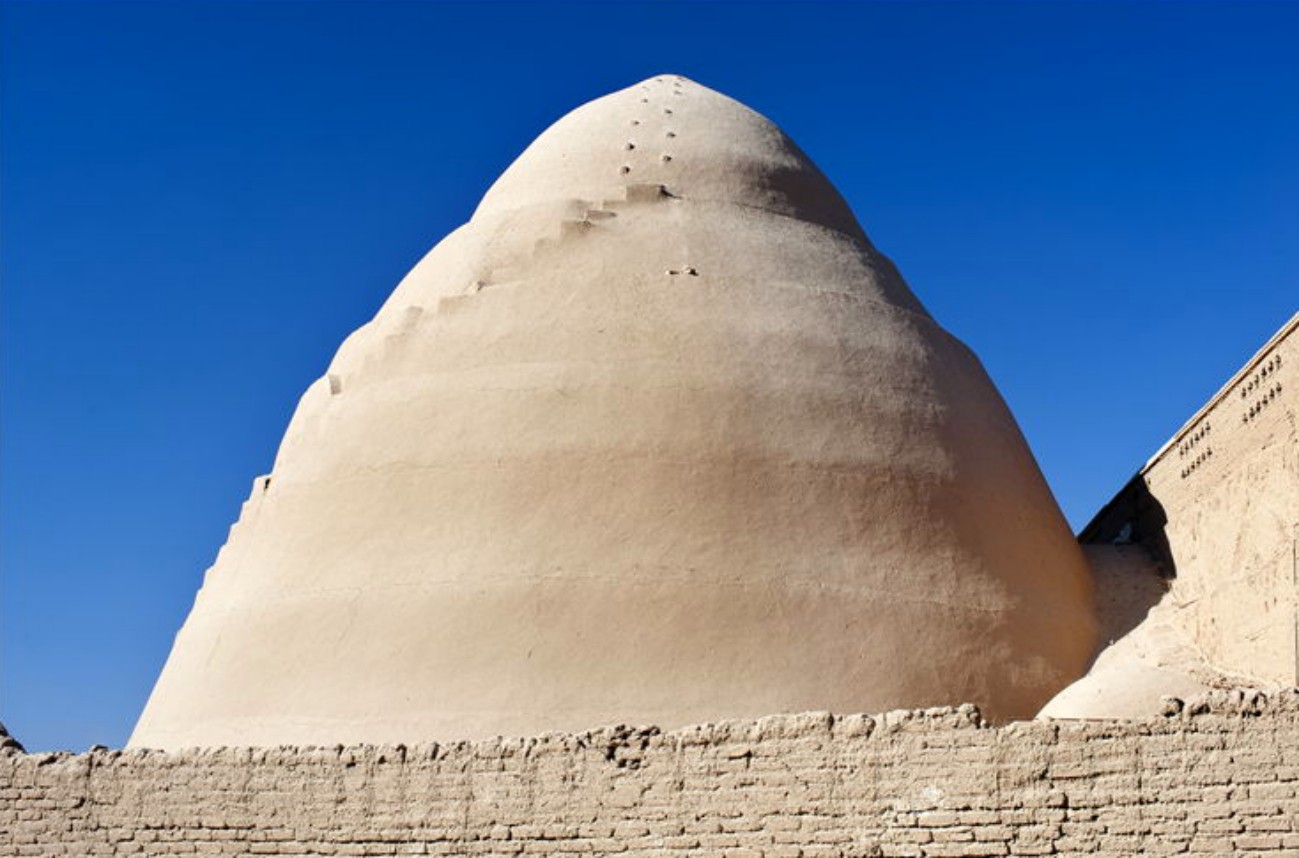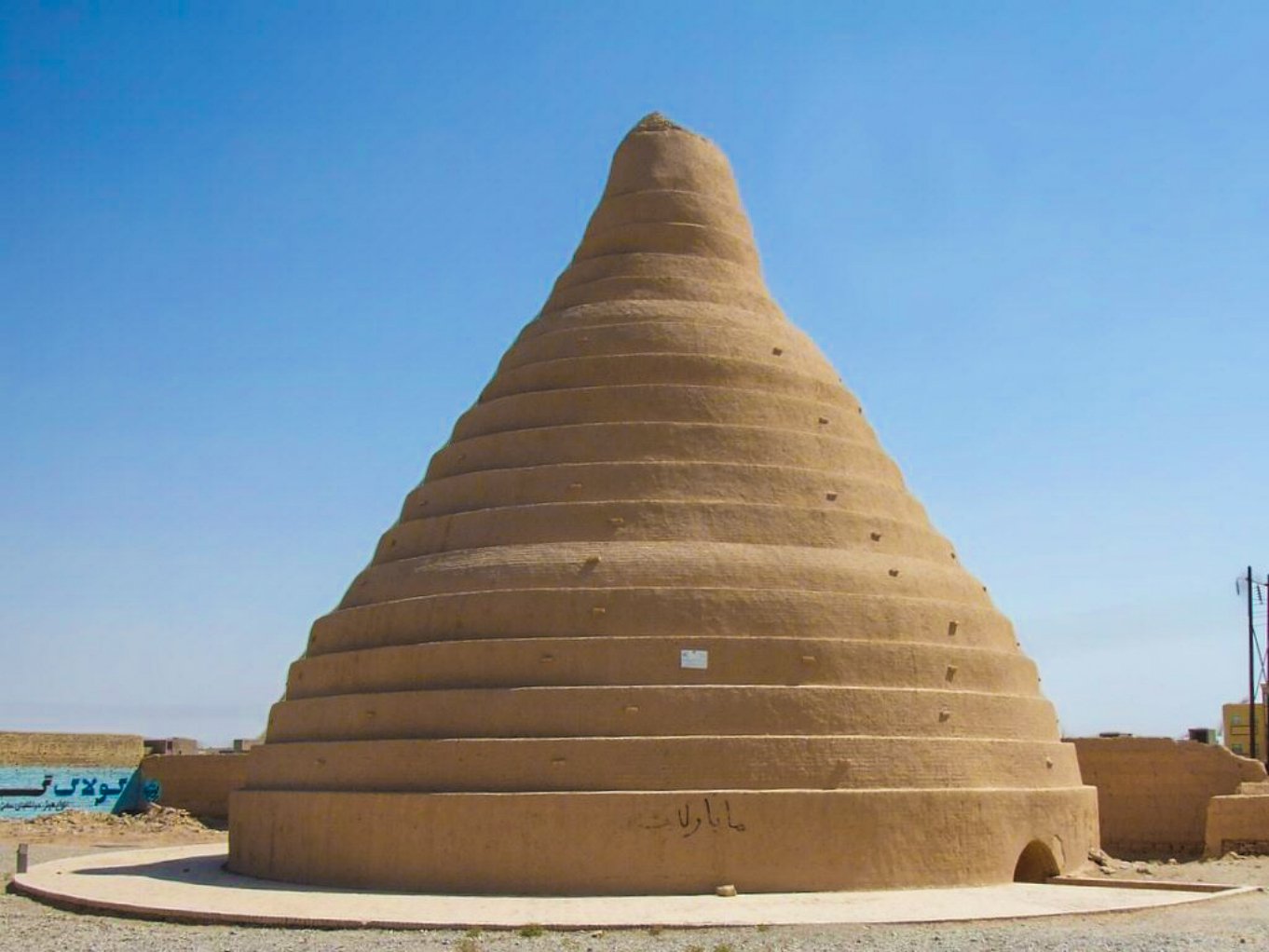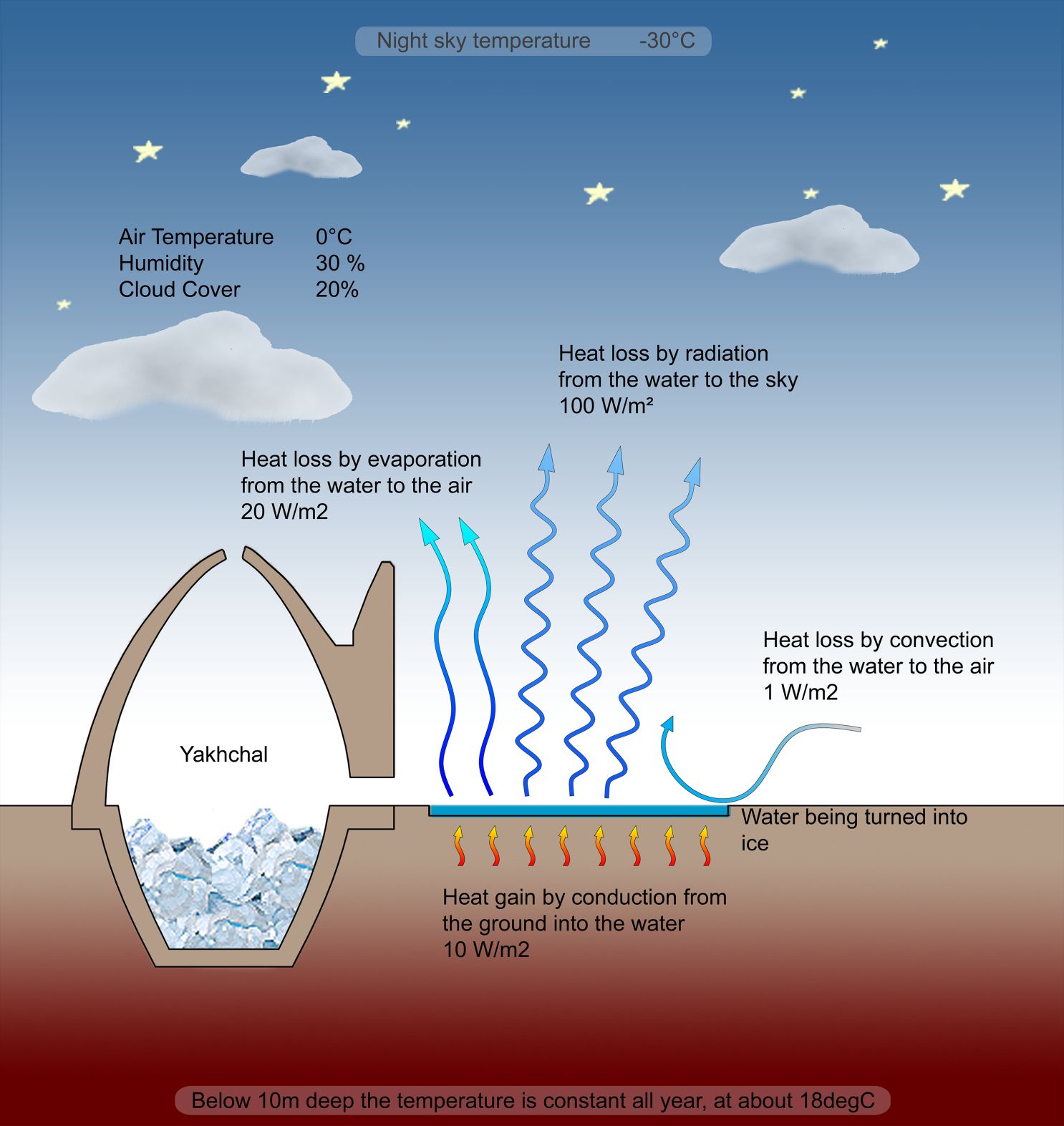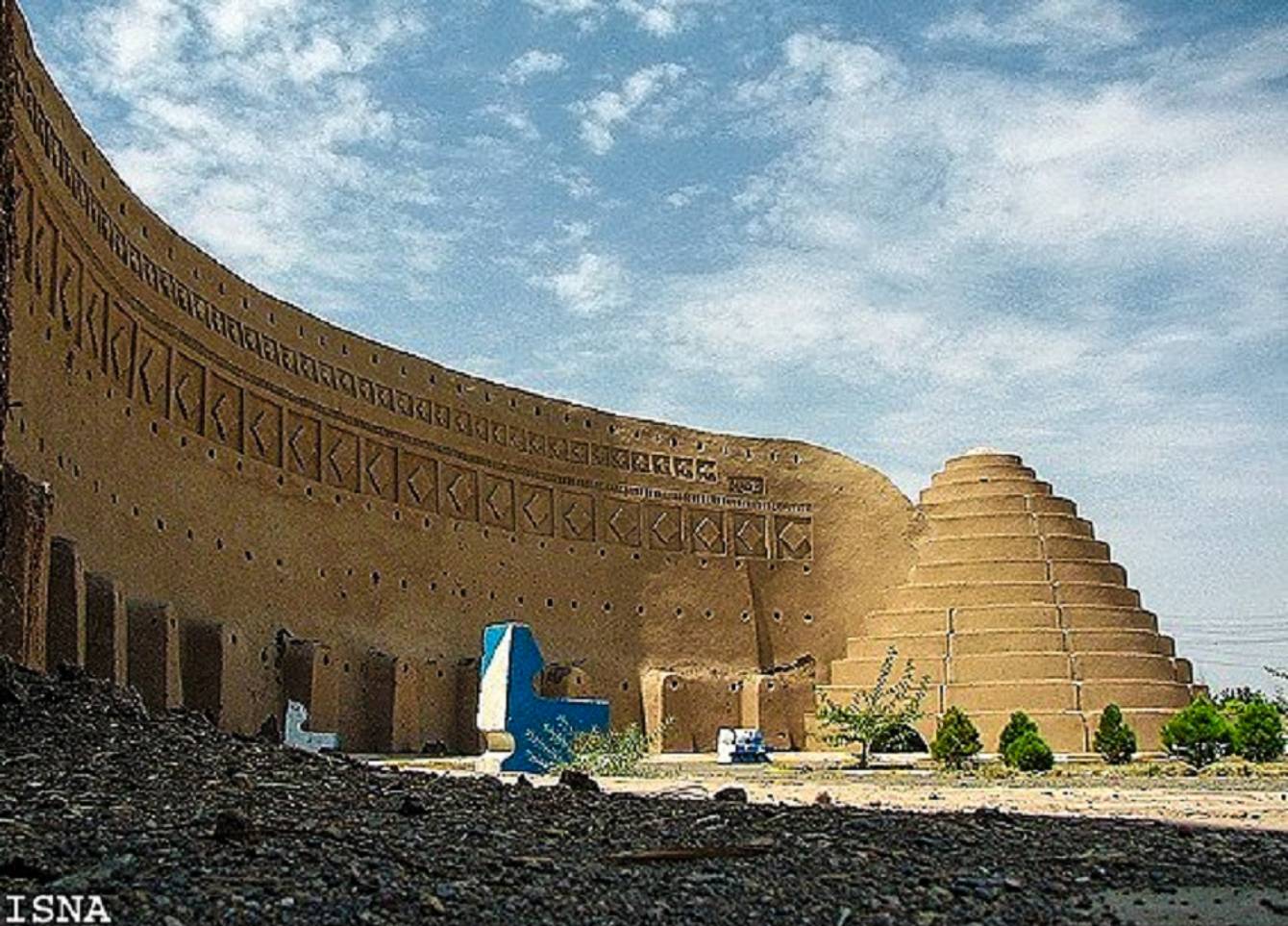Most of the households in the world today have refrigerators but need to keep food on lower temperatures is not new. People harvested ice and snow as early as 1,000 BC and there are written evidence that ancient Chinese, Jews, Greeks and Romans used to do this. But what people that lived in deserts did? Some of them, like Persians, built an advanced mechanism for this particular purpose.

By 400 BC, Persian engineers had mastered the technique of storing ice in the middle of summer in the desert. The ice was brought in during the winters from nearby mountains in bulk amounts, and stored in their own freezers called Yakhchal, or ice-pit.

These ancient refrigerators were used primarily to store ice for use in the summer, as well as for food storage, in the hot, dry desert climate of Iran. The ice was also used to chill treats for royalty during hot summer days and to make faloodeh, the traditional Persian frozen dessert.
Aboveground, the structure is comprised of a large mud brick dome, often rising as tall as 60 feet. Below are large underground spaces, up to 5000 cubic meters, with a deep storage space. The space often had access to a Qanat (a system led by water channels from the mountains), or wind catchand often contained a system of windcatchers that could easily bring temperatures inside the space down to frigid levels in summer days.
The Yakhchal have thick mud brick walls that are up to two meters thick at the base, made out of a special mortar called special mortar called sārooj, composed of sand, clay, egg whites, lime, goat hair, and ash in specific proportions, which acts as an insulator. This mixture was thought to be completely water impenetrable.

The massive insulation and the continuous cooling waters that spiral down its side keep the ice stored there in winter frozen throughout the summer. These ice houses used in desert towns from antiquity have a trench at the bottom to catch what water does melt from the ice and allow it to refreeze during the cold desert nights. The ice is broken up and moved to caverns deep in the ground. As more water runs into the trench the process is repeated.
Isfahan had many yakhchals and some of them were for private use. Shops preserved sherbets and fruit with ice and huge chunks of ice were carried by donkeys and sold everywhere. Ice could be also bought ice in the bazaar or straight from the yakhchal building. Yakhchals were the forerunners of modern-day thermal energy storage systems.
Some of these buildings were built so well that some of them stand even today. One of the Yakhchals that still stands today is in Kerman, capital city of Kerman Province, Iran. It is about eighteen meters high. But it is one of the rare surviving yakhchals.

In time they were replaced with modern electric refrigerators, freezers and air conditioners because of many different reasons like accessibility, practicability and many health risk issues. Moreover, desert storms eroded a lot of Yakhchal buildings especially to the ones that were in the open in the desert regions.




